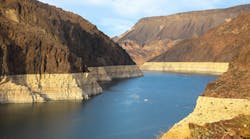American Rainwater Catchment Systems Now Offering 4 Levels of Education
The American Rainwater Catchment Systems Association (ARCSA) now offers four levels of rainwater catchment education with three levels of professional recognitions. ARCSA is a 501(c)(3) non-profit organization that was founded in 1994 to promote rainwater catchment systems in the United States.
ARCSA's 100 Level Course Introduction to Rainwater Harvesting is designed to educate professionals, regulators, decision makers, business and home owners, and other individuals interested in the process of planning and constructing an effective, safe rainwater collection system that meets the needs of the client.
This one-day, 6-7 hour course provides an overview of rainwater harvesting and its uses and applicability to conserving rainfall as a natural resource. Participants will be introduced to the concepts and techniques for harvesting rain passively in rain gardens, green roofs and proper landscape design, as well as the use of more complex active systems using a catchment container. Course content covers the design and installation of catchment systems from the roof to the faucet, with discussion on optional uses—both outdoors and indoors, potable and non-potable—of this precious resource.
ARCSA's 150 Level "Certified Associate" (CA) Courses are open to the public and any industry professional in sales or related businesses to the rainwater harvesting industry and are pursuing a greater understanding of rainwater harvesting. The course is required for those seeking ARCSA CA designation.
This 6-8 hour course that goes beyond the 100-level course and covers water issues, supply and demand calculations, tank sizing, material and location options, conveyance and delivery of water to its intended use and use options. Water quality concerns for intended uses also are covered along with national codes, and restrictions.
ARCSA's 200 Level "Accredited Professional" (AP) Courses are open to the public and any industry professional pursuing greater understanding of rainwater harvesting. The course is required for those seeking ARCSA AP designation.
This two-to three day course provides an in-depth review of rainwater harvesting design and installation; outdoor and in-home rainwater use; sanitation for potable uses; rules, regulations, guidelines and restrictions; business management; project planning; site and installation safety; and system construction and maintenance.
ARCSA's 300 Level "Rainwater Harvesting Master" (RWHM) Program is designed to recognize Accredited Professionals who continue to increase their knowledge and skills to a much higher degree and have proven they are leaders in the rainwater harvesting industry. This is the highest designation offered by ARCSA.
This is an extensive program requiring multiple accomplishments, including 42 hours of instruction, passing a closed book test, completion of the ARCSA Design and Construction Workshop, and a mastery of five rainwater collection systems.
ARCSA's 300 Level Design and Construction Workshop is a requirement for the 300-Level "Rainwater Harvesting Master" (RWHM) designation. Individuals seeking 200-Level "Accredited Professional" (AP) designation are also encouraged to attend, but it is not a requirement to be an AP. The workshop is open to all individuals interested in improving their design and construction skills.
The two-to three-day workshop will assist designers and construction workers in installing safe, effective and efficient rainwater collection systems that meet the goals and needs of the client. Instruction is mostly in the field, with minimal classroom time.
The course outline includes:
- Design and site plans, bids and contracts
- Calculating size, friction and volume needed to achieve goals
- Constructing an effective above ground systems as a team -- from the gutter through the tank and pump for the desired usage
- System components including downspouts, wet and dry systems, air-gap, back flow prevention, first flush, calming inlet, adding make-up water, connections and pumps
- Systems constructed for outdoor and indoor non-potable uses
Source: American Rainwater Catchment Systems Association

